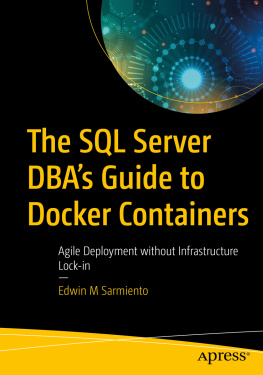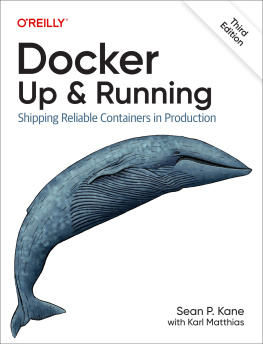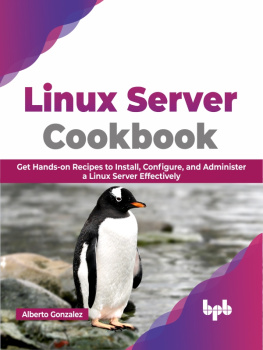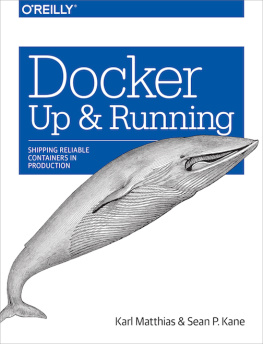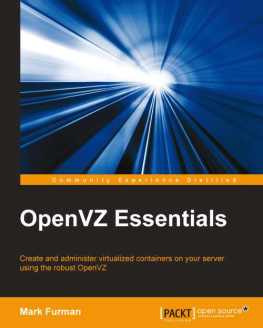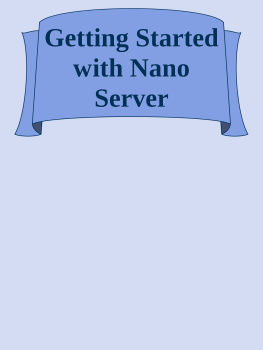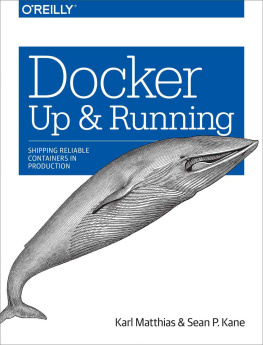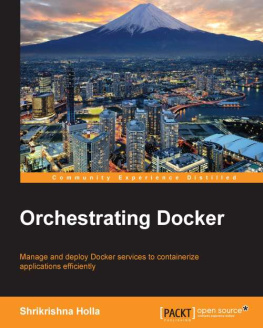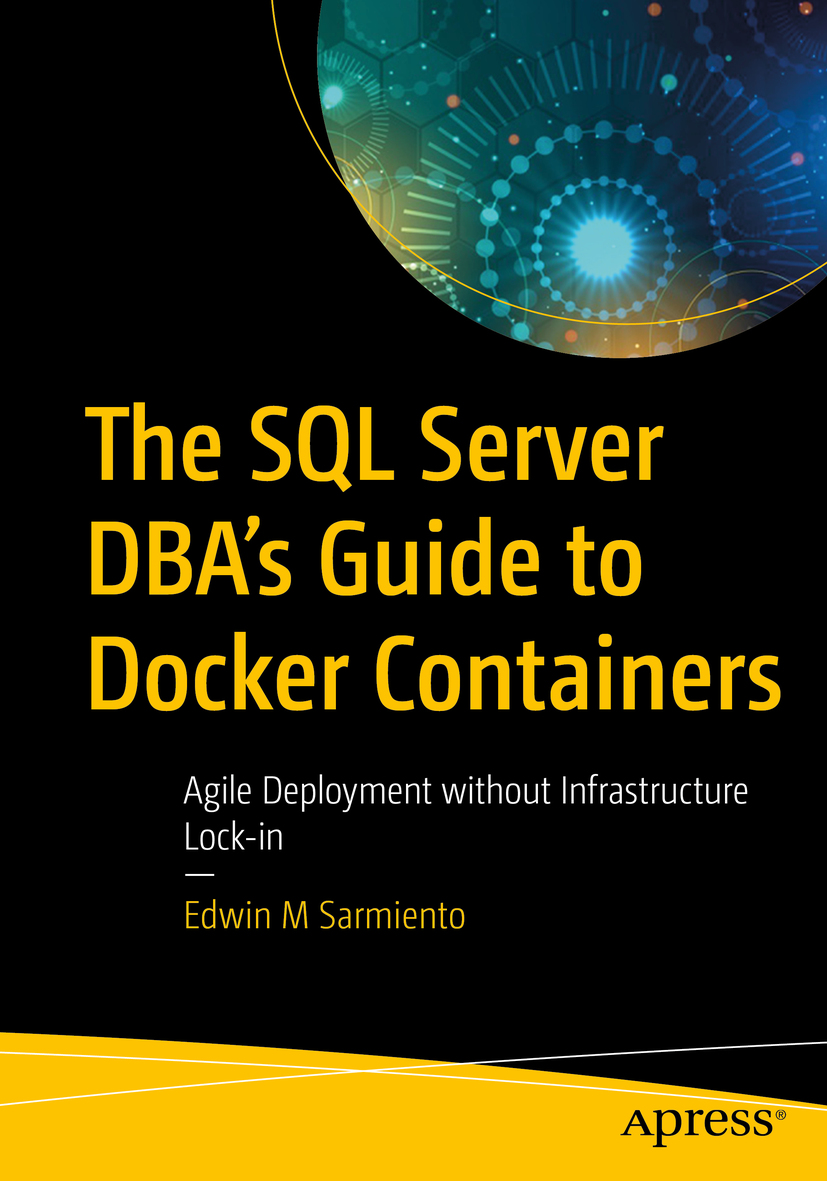Edwin M Sarmiento
Ottawa, ON, Canada
Any source code or other supplementary material referenced by the author in this book is available to readers on GitHub via the books product page, located at www.apress.com/9781484258255 . For more detailed information, please visit http://www.apress.com/source-code .
ISBN 978-1-4842-5825-5 e-ISBN 978-1-4842-5826-2
https://doi.org/10.1007/978-1-4842-5826-2
Edwin M Sarmiento 2020
This work is subject to copyright. All rights are reserved by the Publisher, whether the whole or part of the material is concerned, specifically the rights of translation, reprinting, reuse of illustrations, recitation, broadcasting, reproduction on microfilms or in any other physical way, and transmission or information storage and retrieval, electronic adaptation, computer software, or by similar or dissimilar methodology now known or hereafter developed.
The use of general descriptive names, registered names, trademarks, service marks, etc. in this publication does not imply, even in the absence of a specific statement, that such names are exempt from the relevant protective laws and regulations and therefore free for general use.
The publisher, the authors and the editors are safe to assume that the advice and information in this book are believed to be true and accurate at the date of publication. Neither the publisher nor the authors or the editors give a warranty, express or implied, with respect to the material contained herein or for any errors or omissions that may have been made. The publisher remains neutral with regard to jurisdictional claims in published maps and institutional affiliations.
Distributed to the book trade worldwide by Springer Science+Business Media New York, 233 Spring Street, 6th Floor, New York, NY 10013. Phone 1-800-SPRINGER, fax (201) 348-4505, e-mail orders-ny@springer-sbm.com, or visit www.springeronline.com. Apress Media, LLC is a California LLC and the sole member (owner) is Springer Science + Business Media Finance Inc (SSBM Finance Inc). SSBM Finance Inc is a Delaware corporation.
Introduction
The year was 1999. My ex-girlfriend (now wife) and I were wrapping up the final touches in preparation for a new Internet cafe that we were about to open. I unboxed my brand-new US Robotics Sportster 56K dial-up modem, plugged it into my main computer, and waited to test my Internet connection. This was the moment that I had been waiting for.
During this time, I was still relatively new to the Internet. Having been introduced to it during my university days, I understood how powerful it was. My classmates and I used it to send physics lab reports to each other, either through email or simple FTP. I skipped libraries and started using Lycos and AltaVista to do my research. I used it to create a simple website on GeoCities that functioned like a resume. I knew I chanced upon a gold mine that no one in my university (nor my city) was fully aware of. But this was nothing quite like what I saw when I turned on my computer and connected to the Internet.
An ad on my Yahoo Mail popped up about a new service offering from Dialpad: free international phone calls worldwide from the comforts of your own desk. I initially thought this was insane. You see, back in those days, to make international phone calls, you would have to dial a number that connects you to a trunk line or an operator who will make the call on your behalf. Plus, it costed an average of $5/minute to call a phone in San Francisco, United States, from Manila, Philippines. This Dialpad thing didnt make sense.
But I had got nothing to lose. I connected my headset to the computer, launched the Dialpad applet inside Netscape Navigator, and dialed my aunts phone number in San Francisco. Within a few minutes, we were talking I can hear her, she can hear me. I could not believe it. What I thought was an insane idea had become reality. And I couldnt wait to tell my parents. No more expensive phone calls to the United States.
But
Its interesting how a technological innovation such as the Voice over Internet Protocol (VoIP) that started more than four decades ago (it was invented in 1973 but wasnt commercialized until the late 1990s) has created an entire industry. It has created job opportunities like VoIP engineers, network engineers, developers who write apps that leverage VoIP, and the like. It allowed applications that run on top of VoIP to go mainstream the friend you called on Instagram, the conference call you hosted on Zoom or Skype, or that aunt you talked to on WhatsApp.
Every technological innovation that solves a major business pain point goes through the same process of conception, adoption, and, finally, becoming common. In the case of VoIP, the expensive and cumbersome task of making an international phone call. We technology professionals should be on the constant lookout for the next new thing, applying critical thinking as to how it can create the next industry. We need to learn how to observe the winds, watch where it is going, and adjust our sails. Or else, we run the risk of becoming obsolete and not able to advance in our careers. Mainframes and FORTRAN, anyone?
But that doesnt mean youll be recognized by your peers as the Oracle of Tech. In fact, quite the opposite. Youll be ridiculed, mocked, scorned, or even considered crazy. When I told my mom I could call the United States for free using the Dialpad service , she literally laughed. When I told my classmates in 1996 that robots and artificial intelligence will become mainstream, I was ridiculed. When I told my peers back in 2003 that they should look forward to having a Linux exam option added to the Microsoft Certified Systems Engineer certification, they called me crazy. It didnt help that Steve Ballmer called Linux a cancer in 2001.
This is why I described the lifecycle of a technological innovation. Because if you know how it works, it wouldnt matter what other people think or say. You are absolutely sure that it will work the way it does. Look back at the technological innovations in the last four decades. Virtualization was born out of a need to share expensive computer resources among a large group of users back in the days of the mainframe. Today, every organization leverages virtualization to run applications. The public cloud was born out of a need to treat IT as a business model to generate revenue instead of merely a cost of doing business. Today, public cloud providers are used instead of building private data centers and buying hardware.
This brings us to 2017, the year Microsoft released SQL Server 2017. It was the first version of SQL Server that ran on top of Linux. Yes, the same Linux that Steve Ballmer called a cancer in 2001 is now running the worlds most popular operational database management system, according to Gartner. Even the Microsoft Azure certification exams have Linux components in them. Microsoft plus Linux is no longer a topic of April Fools jokes. This is real. And just like the lifecycle of any technological innovation, this will become mainstream. The question is, will you be ready when that time comes?

